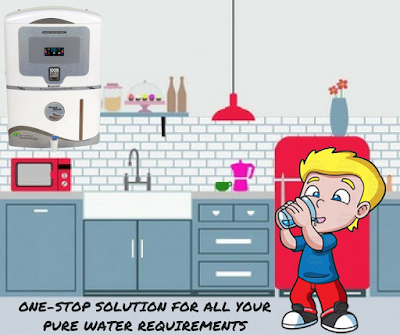Understanding ORP and pH and their importance
Oxidation reduction potential (ORP)
Oxidation reduction potential
otherwise called Redox potential is a parameter which measures the nature of
water. It demonstrates the capacity of the substance to lessen or oxidize
another substance. As such, ORP decides how much degree a given solution is prepared
to either accept or discharge electrons through chemical reactions. ORP is
measured by the assistance of ORP meter which has a range of - 2000 to +2000
units expressed in terms of volts (V) or mill volts (mV).
ORP sensor works by measuring the amount of
dissolved oxygen.
• The positive (+) ORP reading implies
the solution is an oxidizing agent. The more positive ORP, the more oxidize the
solution is, that implies the solution has a higher capacity to dissolve unsafe
contaminants through water softener. For instance: if any given solution
demonstrates ORP as (+) 200mV, than this solution is 2 times more oxidize than
the solution shows ORP as (+) 100mV.
• The negative (+) ORP reading implies
the solution is a reducing agent. The more negative ORP reading, more anti
oxidizing the solution is, that implies the solution contains less dissolved
oxygen as the organics are expending the oxygen. For instance, the solution
with ORP (-) 200mV is 2 times more anti-oxidizing than a solution with ORP (-)
100mV.
Except 'alkaline ionized' water, most
different sorts of water are an oxidizing agent (ORP value is positive).
Alkaline ionized water has negative ORP value, shows it as an anti-oxidizing
operator, and it can discharge its additional electrons that helps to destroy
the poisonous quality of free radicals.
Potential hydrogen (pH)
pH value shows the hydrogen
concentration which decides the nature of the water we get from water purifier, regardless of whether the solution is basic
or acidic or neutral. It is measured by the pH scale, and its index value is
identified with the proportion of positive hydrogen ions (H+) and negative
hydroxyl ions (OH-).
• The solution is called acidic (i.e.
pH value <7), when the concentration of H+ ions is higher than OH-ions.
• The solution is called alkaline
(i.e. pH value >7), if the concentration of OH- ions are higher than H+
ions.
• The solution is called neutral (i.e.
pH value = 7), when the concentration of OH-and H+ ions are equivalent.
The pH value is shown in logarithmic
scale. Subsequently, when the pH value increases or reduces by 1unit, it
implies the concentration of hydrogen particles changes by 10 times. Ex:
Solution with pH value 4 is ten times more acidic than a solution with pH value
5.
Significance of ORP and pH
Higher positive ORP is desirable for
swimming pools, spas, and sewage water as more oxidation will happen which will
demolish every one of the pathogens, and contaminants. Ordinarily chlorine is
added to drinking water as it has high ORP and will oxidize and demolish all
the unsafe micro-organisms.
RO water
with pH value 6.5 to 8.5 is considered as safe for drinking, as this value
shows that the water is neither acidic nor alkaline enough to be destructive to
human body. At the point when pH value drops to beneath 6.5 and furthermore
increases above 8.5, water becomes noticeably poisonous, causes different
medical problems like eye and skin irritation, diarrhea, sickness,
gastrointestinal upset, and so forth.



Comments
Post a Comment